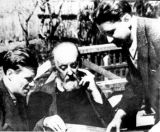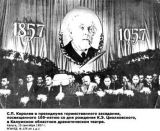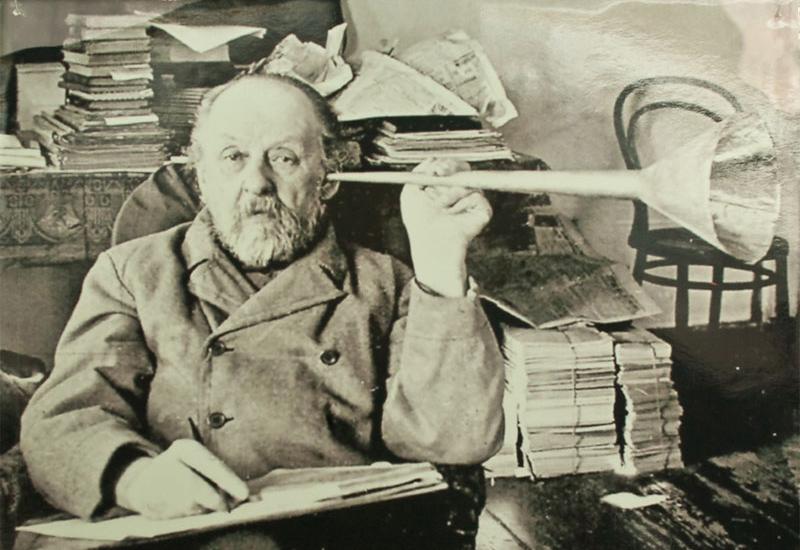"Many people think that I'm busily about the rocket and care about its fate for the rocket itself. It would be a grave mistake - wrote Tsiolkovsky. – The rocket for me is just the way only, a method of penetration into the depths of space, but not an end in itself. The whole point is a moving from the Earth and the conquest of space. We must adopt, so to speak, "cosmic philosophy."
Philosophical development of the idea of the need of space exploration and further development of humanity - that's the motive of all scientific and artistic works Tsiolkovsky. Science researchers, philosophers and specialists of different scientific fields are amazed by the encyclopedic knowledge Tsiolkovsky, his scientific intuition and scientific predictions. Unexpected was his suggestion to acquire a person as a result of the evolution of a thin, radiant body. Ziolkowski admitted the impact humans on the development on the universe, the influence of the mind on the life of the universe. He believed in a future meeting with intelligent beings from other worlds, made the exact description of work astronauts aboard space stations and the like. "A brilliant scientist described the work of man in space, as if he was there," - said Alexey Leonov, the first man to walk in space.
 Well known are prophetic words Tsiolkovsky: "Humanity will not remain forever on Earth, but in pursuit of light and space, at first timidly penetrate beyond the atmosphere, and then conquer the whole of space around the sun."
Well known are prophetic words Tsiolkovsky: "Humanity will not remain forever on Earth, but in pursuit of light and space, at first timidly penetrate beyond the atmosphere, and then conquer the whole of space around the sun."
K.E. Tsiolkovsky made development of the theory of rocket flight and the basic principles of rocket and space systems. In 1895 there was a publication of his work "Dreams of Earth and the sky and the effects of gravity," in which the author based his idea of reaching the speed necessary for separation from Earth, showed the possibility of creating an artificial Earth satellite. In his monumental work, "Investigation of outer space rocket appliances", 1903, Tsiolkovsky set the laws of rocket motion as the body of variable mass, determined the efficiency of the rocket, investigated the effect of air resistance.
"Plan Tsiolkovsky," published in the early twentieth century presented a considerable interest for experts. Part of the 16-point "plan" is already implemented and thus never break the sequence of points defined by Tsiolkovsky. (Supplement in italics - Pavel Popovich).
 1. A rocket plane with wings and common controls is built...
1. A rocket plane with wings and common controls is built...
(1942 Rocket Plane "B-1").
2. Wings of the following airplanes worth a little decrease, motor power and speed should be increased ...
(1949 Jet Machine "Mig-15", "Mig-17", "La 15").
3. The bodies of airplanes should be made impermeable to gases and filled with oxygen, with devices that absorb carbon dioxide, ammonia and other waste products of human ...
(In 1956, planes .. "Tu-104").
4. The rudders (meaning gas rudders) which are working perfectly in a vacuum and in a very rarefied air where the projectile flies should be removed. It should be a wingless airplane, double, triple, filled with oxygen, hermetically sealed ...
(Jets second generation).
5. Speed achieved should be up to 8 km / h., Centrifugal force completely destroys the weight, and the rocket for the first time is beyond the limits of the atmosphere ... (1957 launch of the first artificial satellite).
6. You can then use the simple, not double body. Flights beyond the atmosphere are continuing. Jet devices are increasingly removed from the air shell of the Earth, but still they come back because they have a limited supply of food and oxygen.
(The beginning of the 60s. - Spaceships series "East").
7. There are the attempts to rid of carbon dioxide and other human waste using small plants at the same time provide nutrients ...
(Space Programme "Chlorella").
8. Space suits are created for the safe exit from the rocket in the spacer. (1965 Alexei Leonov spacewalk).
Implementation of the plan was stopped.
9. The special rooms for the oxygen, food, plants and clean air are created. All this is transported and assembled on the space. Man achieves greater independence from the Earth as finding ways to live independently.
10. Big settlements are set around the Earth.
11. The solar energy is used not only for the convenience of life (comfort), but also for the movement throughout the solar system.
12. Colonies in the asteroid belt and other places of the solar system, where only find small celestial bodies are created.
13. The industry is developed and the colonies are spreading quickly.
14. The individual (especially individual) and public (social) perfection is achieved.
15. The population of the solar system is a hundred thousand million more than the Earth. Settling around the Milky Way is imminent.
16. The sun starts fading. The population of the solar system, the remainder is removed from it to other suns, to the brothers that flew before.
Indeed, Tsiolkovsky suggested not only satellites, interplanetary probes, flights to the planets of the solar system, but the whole city, grand human settlements in the interplanetary space, provided industrial complexes in space, orbital scientific bases.
"The most wonderful, bold and original creation of Tsiolkovsky - are his ideas and work in the field of rocketry. Here he is far ahead of his predecessors and scientists of all countries and the era of his day, "- wrote S.P. Korolev.

